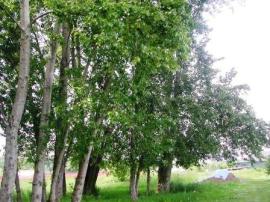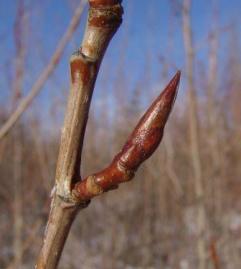
Today, we conclude yesterday’s blog, “What good is a cottonwood tree?”
What good is a cottonwood tree?There can be many reasons to dislike cottonwoods — low timber value, low BTUs of energy for firewood use, and they can crowd out and shade new conifer plantations. But there are many reasons that these large poplars can be worthy additions to the landscape.
For starters it seems like every browsing and gnawing animal thrives on young cottonwood twigs, bark, cambium, and leaves. This includes a host of insects as well as the predatory birds and mammals that feed on them. Obviously, the water-loving cottonwood does well in riparian environments and, consequently, so do beaver, which use cottonwood for food, dam, and lodge building.
Being a deciduous species, cottonwood will root and stump-sprout when felled. Rabbits and hares feed extensively on cottonwood shoots and small stems; deer, elk, and moose are particularly fond of them as well. Ruffed grouse and poplar trees go hand-in-hand. Cottonwoods have large naked terminal buds that develop and persist through the winter months. During high snow events, grouse literally survive in those trees, roosting at night and feeding on these highly nutritious buds during the day.
The older large cottonwoods make excellent nest platforms for a variety of predatory birds. Eagles and ospreys commonly select large branches or broken-top cottonwoods as platforms for nest construction. Eagles frequently use cottonwoods for night roosts and for hunting perches. Great horned owls will commandeer other bird and squirrel nest platforms in cottonwoods and use them as their nest sites, as will red-tailed hawks.
In drier environments, cottonwoods will be relegated to stream bottoms and are often the only large tree for long distances. In these environments, turkeys (in particular the Rio Grande subspecies) select cottonwoods for night roosts. Without suitable night roosts some flocks of turkeys would likely disappear.

As cottonwoods age and show obvious signs of senescence and decay, they are far from done as an important wildlife habitat. In fact they may harbor more wildlife than when they were young and robust. When branches snap off and expose cambium, they are usually attacked by a variety of fungal species. They are susceptible to heart-rot and other decay issues as a result. This renders them highly valuable to a large variety of cavity-dependent birds and mammals. Several species of woodpeckers not only feed on the insects that the tree supports, but excavate nest cavities in them. More than 40 other species of birds and mammals use the abandoned woodpecker cavities for their nesting and roosting activities. The larger hollow cottonwoods have been used as winter hibernation chambers by black bears and smaller openings by some bat species.
As exasperating as cottonwood trees can be to some forestland owners, they are an invaluable wildlife habitat resource throughout their range. Where they can be protected –do it! And if they don’t occur within suitable habitat on your property, they are easily planted. In fact they are one of the easiest species to propagate, and one of the fastest to deliver results.
This article written by Jim Bottorff, a retired DNR forest stewardship wildlife biologist, and originally published in Forest Stewardship Notes, a quarterly e-newsletter produced by DNR and Washington State University Extension.
If you enjoyed this blog and want to learn more about managing small woodlands, or just have an interest in forest science, subscribe to Forest Stewardship Notes. It’s FREE.
See the latest issue of Forest Stewardship Notes
| Follow DNR on: |  |
 |
 |
 |
 |